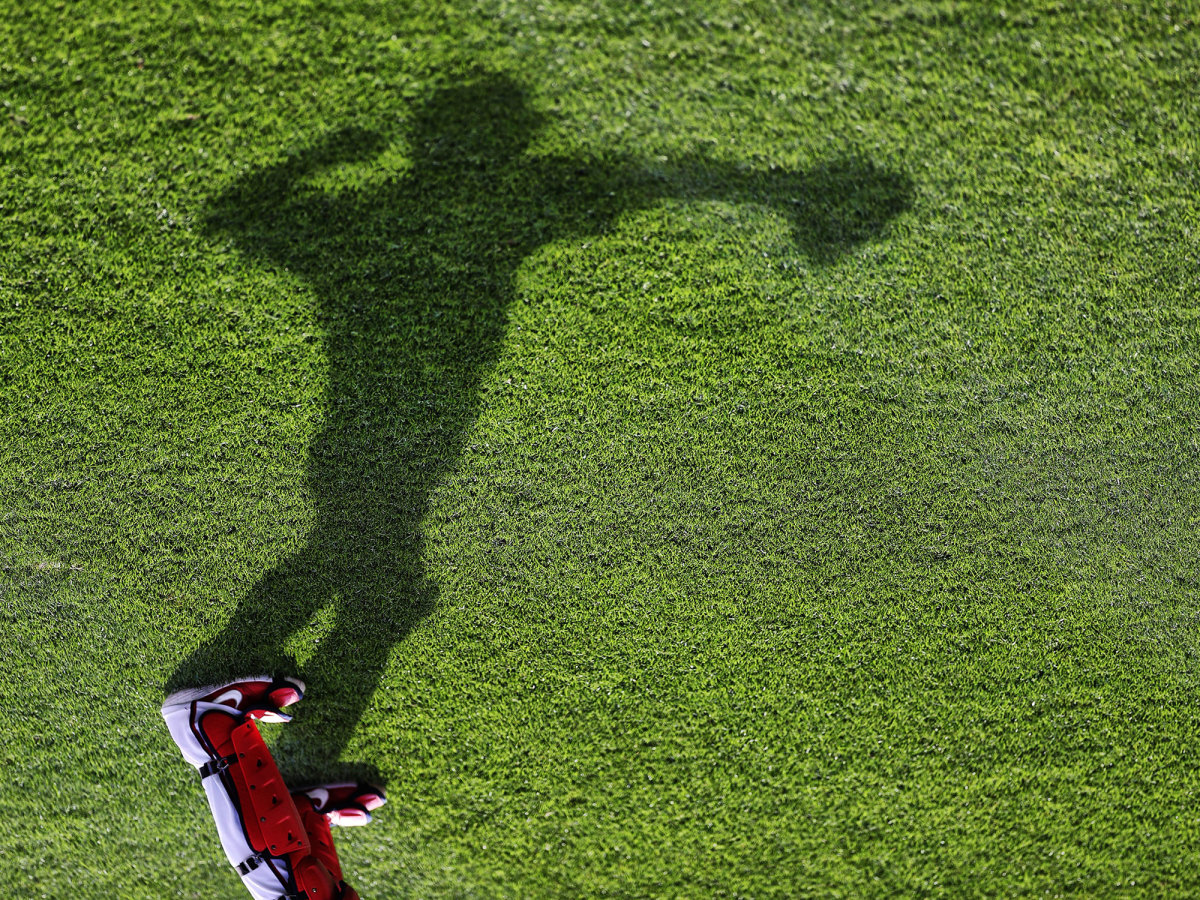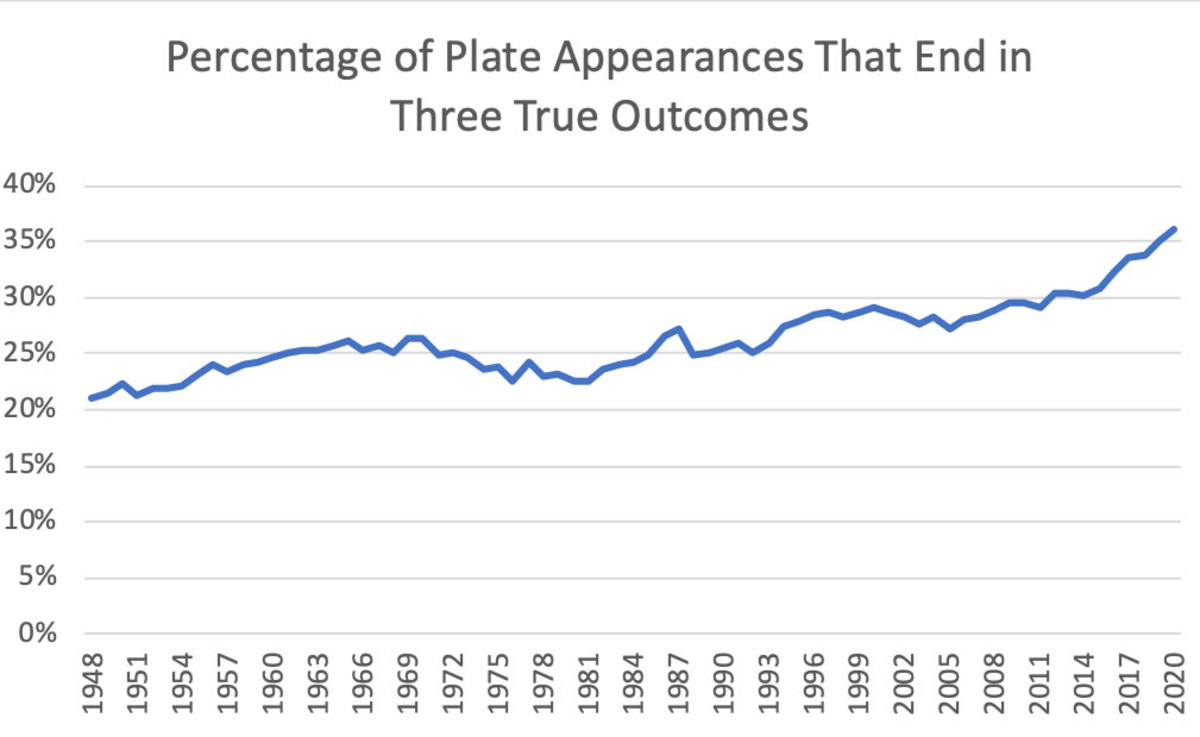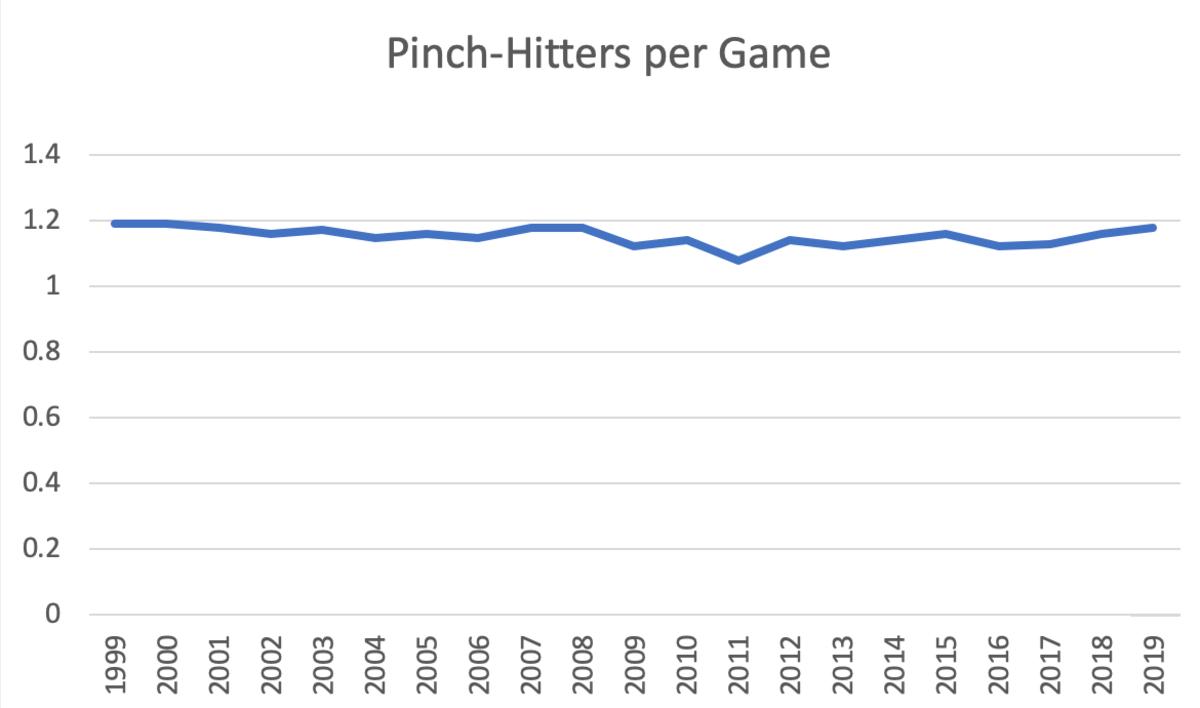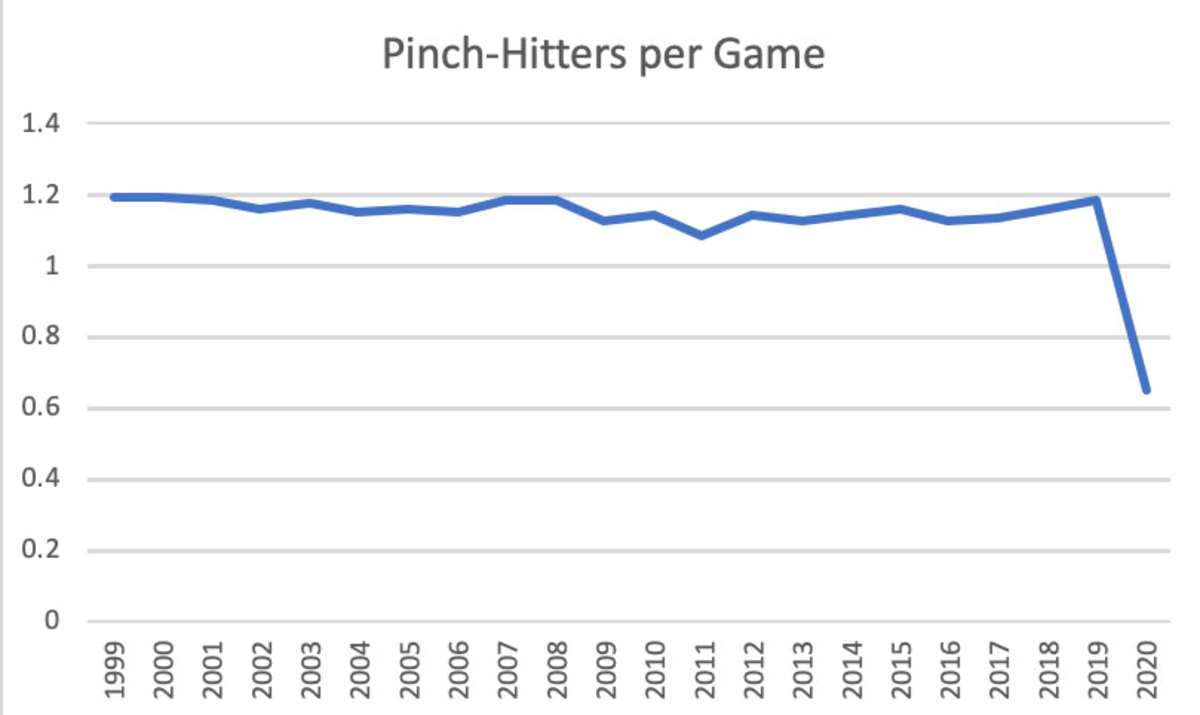What Was Baseball in 2020? Appropriately Weird
This was a weird season for baseball. You know this already, on account of the fact that it has been a weird year for life, and if you tried to forget that for even a second while watching a ballgame, you would quickly be reminded otherwise by the sight of stadium seats filled with glassy-eyed stuffed animals.
Yet there are forms of weirdness besides the physical and the existential. There’s statistical weirdness—the sort that might arise from a season with, say, seven-inning doubleheaders and a whole slew of other rule changes set against a fraught background constantly in flux. It would only make sense that such a year would be just as weird in terms of statistics as it was of aesthetics.
But that didn’t quite happen for MLB. The 2020 league-wide numbers did not feature any massive swings in major statistical categories. Other than the telltale sign of the small sample sizes, there’s no one stat here that immediately marks this brand of baseball as different.
If you look closer, however, there are still some minor oddities here, and some of the numbers that may initially look normal are worth a second glance. So here’s a look back at some statistics from this summer that reflected the weirdness of their circumstances—and some that didn’t:

The Most Popular Topic From Last Year: Three True Outcomes
The 2019 season unlocked a new level of concern about how little the ball was put in play: Both home runs and strikeouts hit all-time highs. (Walks were also up from where they had been a decade prior but were not historically high.) Had 2020 been a normal year, this trend probably would have been a point of serious attention, watched closely to see if it continued. With 2020 as it was … well, there were other things to focus on. But the league-wide stats here suggest the topic will be back in the spotlight for 2021.
The home run rate ticked downward this season. (If just slightly—the percentage of plate appearances that resulted in a homer was still second all-time only to that of 2019.) But the other two numbers rose: strikeouts by a smidgen and walks by quite a bit. The result? The three true outcomes were closer than ever to looking like the three only outcomes. After a record 35% of plate appearances ended in a walk, strikeout, or home run in 2019, the figure rose to 36% in 2020.
On the one hand, this trend is just keeping to the same path that it’s been on for the last few years. On the other, that means that it’s reached a level that baseball’s never seen before, and it’s shown no signs of slowing.

The Other Popular Topic: Length of Game
Another record that MLB set in 2019? The longest games in history, averaging out to 3 hours and 10 minutes. But this stat seems to have reversed in 2020—down to a comparatively breezy 3 hours and 6 minutes.
… until you look closer and realize that “average length of game” includes all regular-season games, which this year included an awful lot of seven-inning doubleheaders. This, of course, naturally drives the average time down. The more instructive number to look at instead is the average length of a nine-inning game. But this one isn’t so promising for the pace-of-play enthusiasts. The average length of nine innings actually increased by two minutes in 2020—from 3 hours and 5 minutes up to 3 hours and 7 minutes. Is that a huge difference? No. But is it worth pointing out in a league where proposed changes to speed things up involve shaving off 30 seconds here and 45 seconds there? Yep.
Farewell to the Pinch Hitter As We Knew Him
As baseball has changed over the last few decades, cycling through strategic trends, one number that has stayed remarkably stable is the rate of pinch-hitting. Look at the last 20 years:

Basically a straight line! Predictable. Soothing. Okay, now let’s add in 2020:

And we’ve now apparently jumped off a cliff—to the lowest rate of pinch-hitting since 1920.
Which makes sense! One of the most common situations for pinch-hitting has traditionally been replacing the pitcher in the National League. With the universal designated hitter, of course, that’s gone. The new DH rule for 2020 may not have accounted for all of the downturn in pinch-hitting, but it probably accounted for most of it. That suggests this level is probably something of a new normal as long as the DH exists in the NL. Get used to it.
The Number of Players Used
Here’s a bit of a weird one. Given that this season was less than half the length of a typical one, with restrictions on pulling from a full pool of minor league players and no window for traditional September call-ups, you’d probably expect that teams used fewer players this year than they would typically. Right?
For hitters, yes. Teams averaged 21 different hitters over the course of the season—the third-lowest number ever. (It comes in behind only strike-shortened 1994 and the early baseball years of 1908 and 1922.) But for pitchers? Clubs used … roughly a normal amount! The average of 26 per team falls short of the numbers from recent seasons but is still more than MLB had averaged in any season before 2015. Which is wild for a season as short as this one—between injuries, schedule demands, and viral outbreaks, teams had to call on more pitchers to make it through 60 games than they’d had to make it through 150-plus games for more than a century.
Hit-by-Pitch Palooza
And, finally, here’s a league-wide stat from this year that does stand out as historically weird. MLB’s seasonal record for hit-by-pitch rate has long been held by 1899—a year when pitchers were very much still figuring out the whole “control” thing and averaged about one hit-by-pitch for every two games. It’s closely followed by 1898 and 1900. And now ... 2020.
The HBP rate had been ticking steadily upward over the last few seasons but hadn’t been threatening to reach historic territory. Until 2020, that is, when the existing trend of hard-throwing pitchers racking up HBPs met lots of pitching turnover and an increasing walk rate in a season without a steady training schedule. With 0.46 HBP per game, it’s the highest rate in modern baseball history.
We’ll spare you the metaphor about this being a year of losing control.
